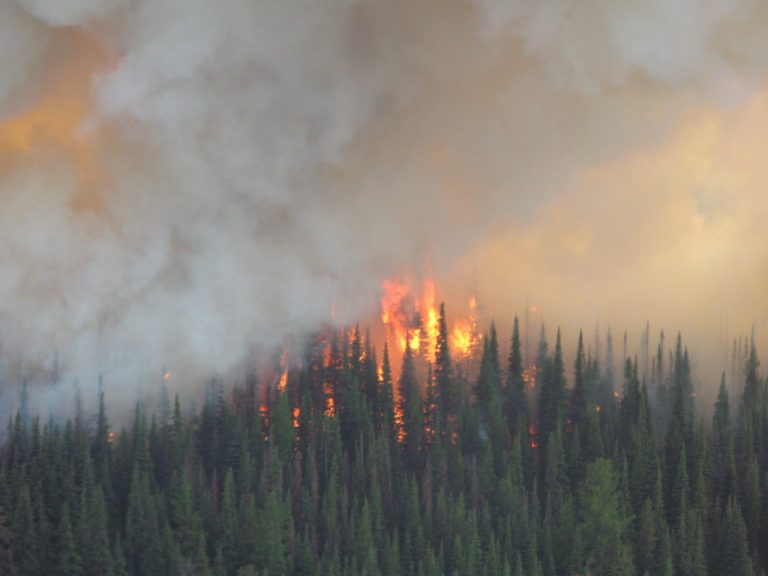Published on October 19, 2021

When the Almeda Fire hit southern Oregon on Labor Day weekend just over a year ago, Christy Brooks was on her way home from her daughters’ school after picking up books and a computer in preparation for the coming year. The air was smoky and smelled burnt, but Brooks doesn’t remember feeling overly concerned.
She stopped to buy drinks at a Chevron station. Five minutes later, when she came out and started driving to her mobile home at an RV park on the outskirts of the community of Talent, the sky had darkened and had an angry orange tinge. That was scary enough, “but when it started to rain ash, I knew something was wrong, something was really wrong” said Brooks. She fled with her 6- and 12-year-old daughters, narrowly escaping the fires that destroyed more than 4,000 homes across the region and scorched 1 million acres.
In the last three decades, climate change has more than doubled the amount of area burned in the U.S, most of it in the West, and the fires to come are likely to be even more frequent and larger. But not everyone will be equally affected. A recent study from the University of Washington found that communities of color are twice as vulnerable to wildfires as other, largely white communities. And children — who experience disrupted routines more acutely than adults — are hit the hardest. The sense of displacement, lack of a permanent home and constant, confusing reshuffling can lead to mental health issues and affect educational outcomes. “Their concentration was shot after the fire,” Brooks said, speaking of her daughters. “They need something stable — not wondering if they have to move somewhere else, or switch rooms. They need to feel safe.”
Continue reading at High Country News.
Originally written by Sarah Sax for High Country News.